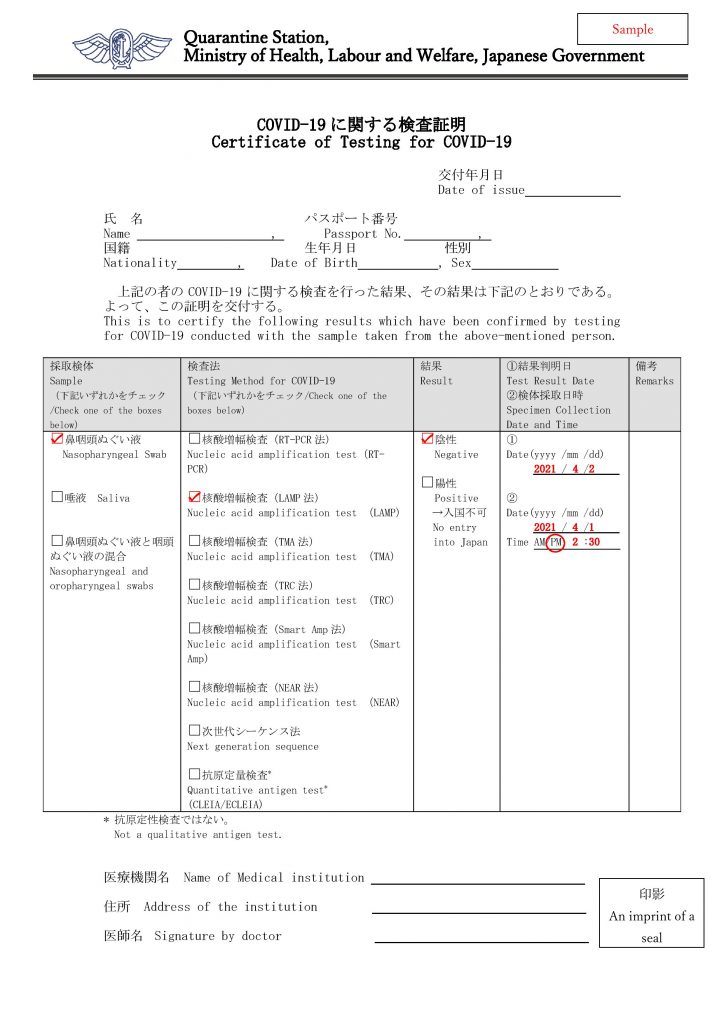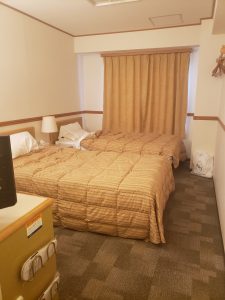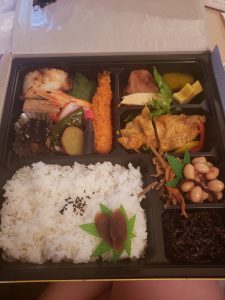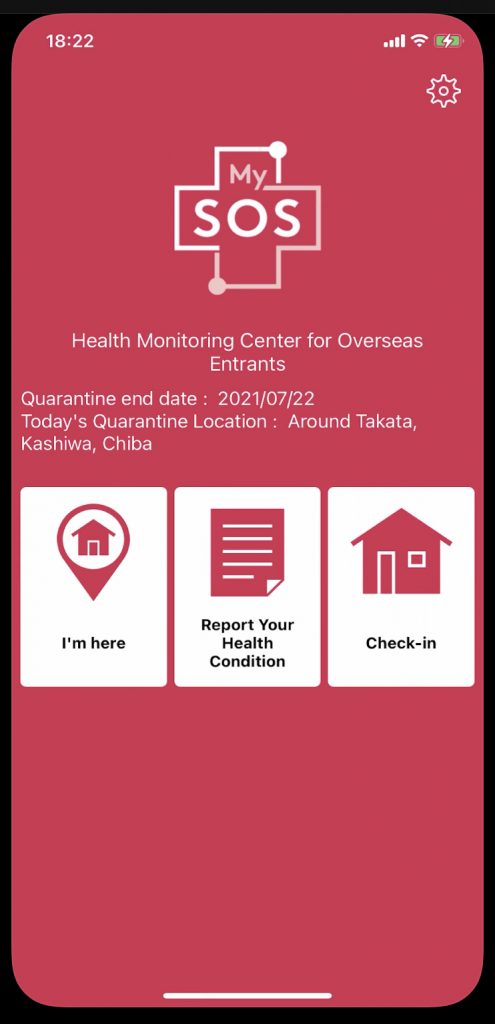This article originally featured in the October 2021 issue of Connect.
Lauren Bertolino (Gifu)
So you want to fly to Japan! That’s the easy part. Although COVID-era travel restrictions have made the process of entering Japan much more difficult than it once was, being prepared and knowing what to expect can help make the process smoother. I stressed out about this way more than I needed to, so I hope that this guide can help you navigate the process of entering Japan and make the entire experience less daunting.
Before Departure
The process of returning starts before you’ve even boarded the plane. Like most countries right now, Japan requires a negative COVID test to enter the country. This isn’t as simple as a take-home COVID test or rapid antigen test from the drug store. The Japanese government requires a specific type of test within 72 hours of departure, plus a form from the Ministry of Foreign Affairs (MOFA) to be signed by a medical professional. Having the incorrect type of COVID test, being outside the 72-hour window, or having the form incorrectly filled out, can all be grounds to reject your entry into the country. Everyone you are travelling with, including young children, must have a negative test and the form filled out.

This is what the form looks like:
Note the acceptable sample types and test types. You can ask your testing facility about them if you aren’t sure you are getting an acceptable test.
Note your test date. Sample must be collected within the 72-hour window. Make sure the facility can return your test results in time for you to fly.
Note that your passport number, nationality, date of birth, etc. must be filled in accurately. Bring your passport with you to the testing facility.
Note the place for a doctor’s signature (many people have had pharmacists or lab techs sign off with no problem. I had mine signed by a Registered Nurse).
So, where do you get tested? Doctors offices, Urgent Cares, hospitals, and pharmacies offer COVID tests, but you should always check in advance that they offer the correct type of test and can return results in time for your flight. Be specific about the type of test you need and bring the paperwork with you! There are also private companies or labs that offer tests specifically for travelers. In a pinch, some airports offer COVID testing, but last minute options tend to be pricier. Tests can range from around $100-$300 USD, so be prepared for that. Always double check that your paperwork is correctly filled out. The airline will check your test results before you are allowed to board the plane.
On the Flight
The flight itself was very comfortable since it was nearly empty. I had an entire row to myself. On the flight, you are required to wear your mask at all times, even while sleeping. During the flight, they will hand out a pledge you have to sign, detailing the apps you must use and the rules of quarantine for Japan.
Landing in Japan
Once your flight lands in Japan, you will go through a series of entry procedures including getting tested again, setting up apps on your phone and making sure you understand the quarantine restrictions, and waiting for the results of your COVID test as well as the usual customs and immigration, and luggage retrieval. Your paperwork will be checked every step of the way, so it may be handy to bring a folder or file to put your documents in. The entire process could take anywhere from one to five hours, so you might want to use the restroom before getting off the plane.
The airport COVID test is a saliva test. You are given a test tube that you spit into up to a certain mark. It can be a little difficult to do this if you are dehydrated, but drinking liquids immediately before can affect your results, so try to stay hydrated during the flight.
Next, airport staff will help you set up the apps for your phone, which the government will use to check in on your location and health during quarantine. There are three apps: COVID-19 Contact App, MySOS, and Google or Apple maps. They will walk you through the set-up and how to use each app.
Then you will wait for your COVID test results. For most people, this was the longest part of the process. If your test is positive, you will be escorted to a designated medical facility. If your test is negative, then you will be escorted to customs and immigration.
This may sound like a lot, but the entire process runs pretty smoothly. There are multiple signs and staff available to guide you through each step seamlessly. They provide English support when needed and thoroughly explain the apps and quarantine process. While it may be tedious, it should not be stressful.
The Quarantine Hotel

Everyone entering Japan is required to be quarantined for 14 days, regardless of vaccination status. Depending on where you are flying in from, you may be allowed to go directly to your home or other quarantine location, or you may be required to stay in a designated government-run quarantine hotel for three, six or ten days before being allowed to continue on. The government of Japan pays for your stay. You can find the list of Japan’s quarantine requirements by location on the Ministry of Foreign Affairs’ website.
I flew in from a place that required a three-day stay. A special shuttle took the group of arriving passengers from the airport to the hotel. For Nagoya, the hotel is five minutes away from the airport. For Haneda and Narita, the hotel is over an hour away in Yokohama (Again, use the bathroom before you get on the bus!).
Once you check in, you will be expected to stay in your room and not leave for any reason. The room was a standard hotel room with the usual amenities. They provided three meals and only three bottles of water with no coffee or tea. I highly recommend you bring your own stash of food and drinks with you—as much as you can fit in your luggage or find at the airport. Hotel meals can vary by location. Breakfast for me was usually onigiri or sandwiches from the 7-11. Lunch and dinner were bentos that left much to be desired, but at least they were free.

At the hotel (and throughout your quarantine regardless of location) you are required to check in using the MySOS app. You will receive prompts twice a day to report your current location, a video call once a day to verify your whereabouts (usually in the morning), and also be asked to report your health condition every day at 11:00 a.m. If you miss a check in, just make sure to respond to the next one. The app also shows what day your quarantine ends.
On the third day, you take another saliva test. Samples were collected at 7:00 a.m. and results were delivered around 1:00 p.m. If your COVID test comes back negative, you can leave the hotel! Those who entered via Haneda or Narita will be taken back to the airport and must proceed to their quarantine destination from there. Those who came in from Nagoya, however, are allowed to leave directly from the hotel.
The Remainder of Quarantine

The Quarantine Pledge
The quarantine pledge asks that you stay at an accommodation facility or at home and avoid contact with others for 14 days. You are not allowed to use public transportation (including trains, buses, taxis, and domestic flights) for the duration. Be sure to install the required applications on your smartphone as well as turn on your location history, respond to daily video calls and check-ins, and report your health. Following all the rules will help prevent legal troubles from befalling you or your residency status.
Note: This may sound really strict and scary, but you won’t get deported for missing one video check-in while you are in the shower. The process is designed to accommodate real people, so just do your best to follow the rules and you will be fine.
After you leave the quarantine hotel, you will still need to isolate somewhere for the remainder of the 14 days. You can do this at home, at a friend’s or relative’s home, or in a hotel or AirBnB. Unlike the government-run quarantine facility, you must reserve and pay for these accommodations yourself. If you are staying with friends or family, you are asked to stay in a seperate part of the house. If you are travelling with someone, you are allowed to stay together.
Getting to your home or hotel can be tricky, so it’s good to plan in advance. You are not allowed to use public transportation of any sort, so you may need to be picked up by a friend or rent a car. There are also private car services that you can hire. For people arriving in Narita, there is a special quarantine train service for international arrivals travelling to Ueno station.
After you arrive at your quarantine location, check in with the MySOS app. You are allowed to leave for necessary errands as long as you do not use public transportation and remain masked. They ask that you engage in countermeasures to prevent spreading the infection, including frequently washing your hands and avoiding the three C’s: closed spaces, crowded places, and close-contact.
My final word of advice is that, while they are quite strict about getting your initial COVID test paperwork filled out correctly, the rest of the entry and quarantine process is not as scary as it seems. You will receive lots of help and clear instructions from the moment you land in Japan. Just do your best to follow the quarantine procedures explained to you at the airport, and you will be OK.
Good luck and have a safe flight!
Additional resources:
- Return to Japan Support Group
- Ministry of Foreign Affairs’ website
- quarantine pledge
- special quarantine train
Lauren likes waking up to mountains everyday and doesn’t like writing biographies of herself.




